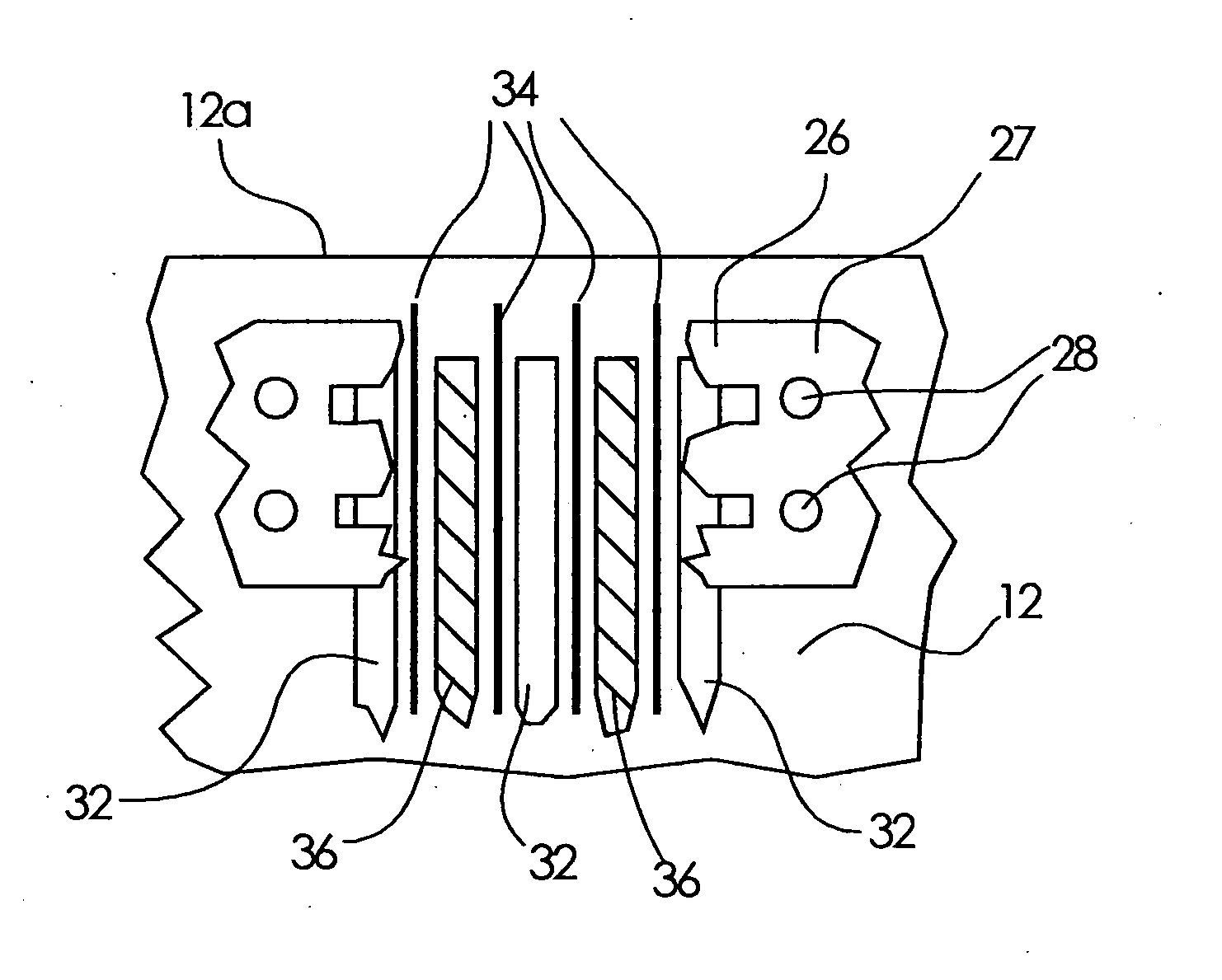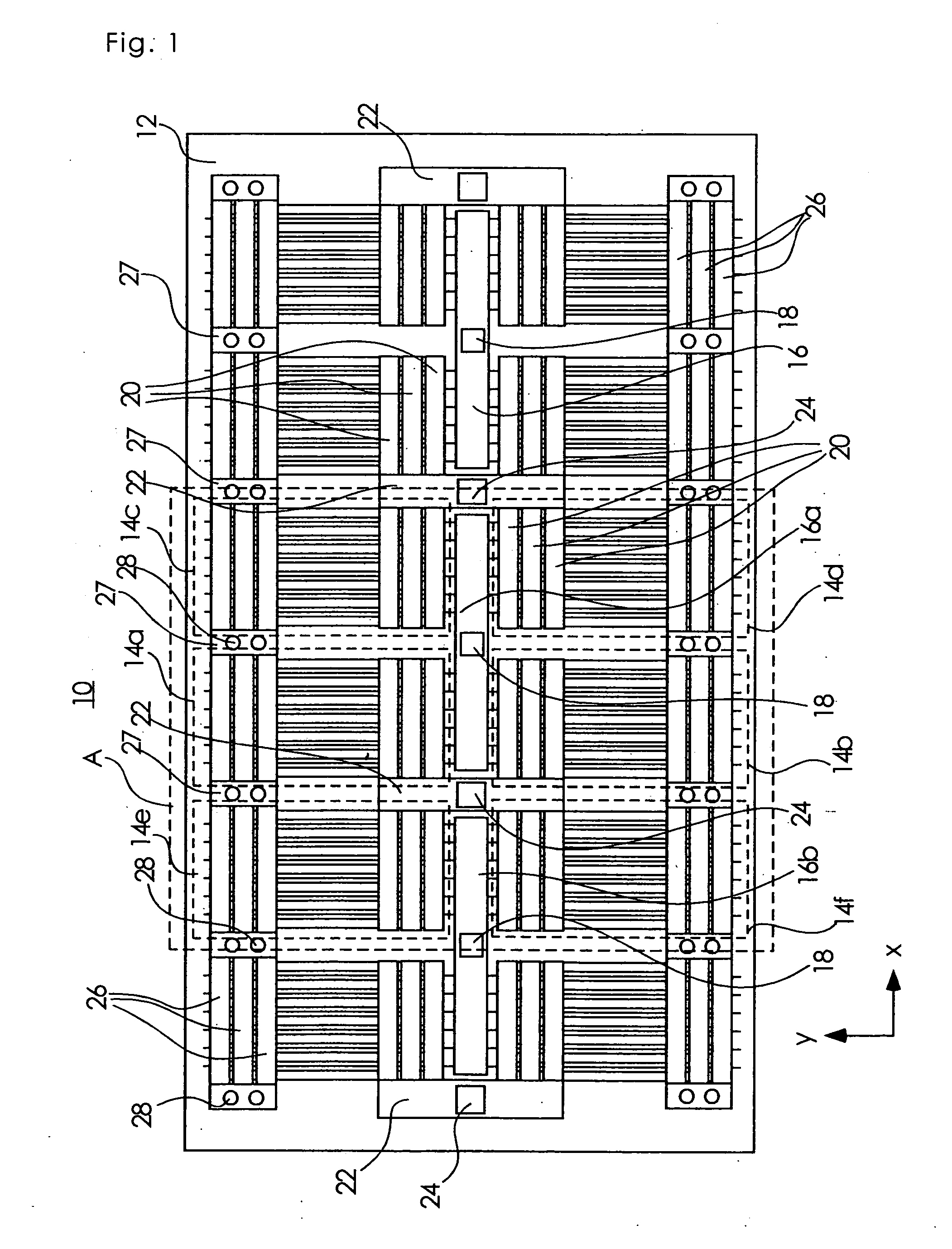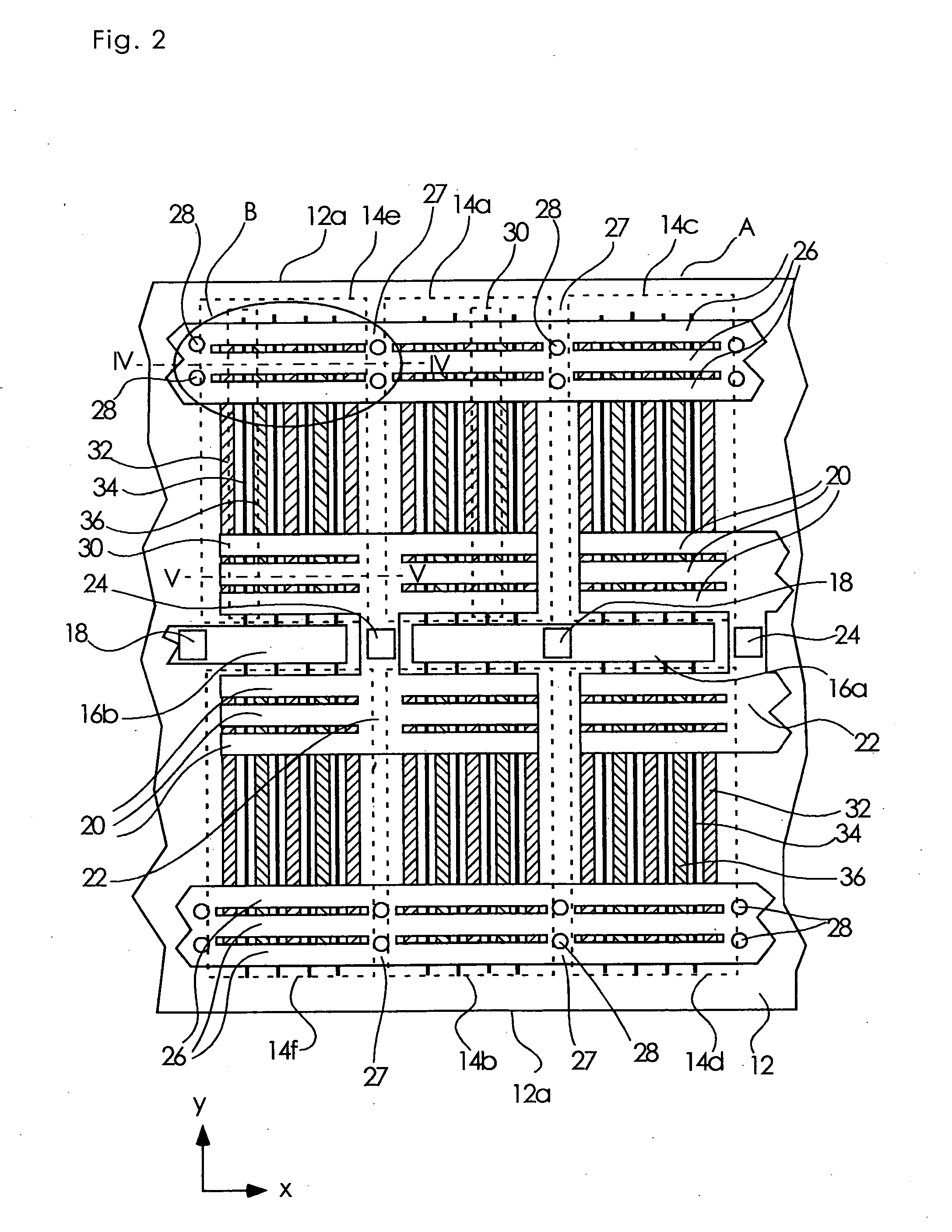High-frequency semiconductor device
a semiconductor and high-frequency technology, applied in semiconductor devices, semiconductor/solid-state device details, electrical apparatus, etc., can solve the problems of warping of the mesfet chip and increase the cost, and achieve excellent high-speed performance, small gain reduction, and high power output.
- Summary
- Abstract
- Description
- Claims
- Application Information
AI Technical Summary
Benefits of technology
Problems solved by technology
Method used
Image
Examples
first embodiment
[0034]FIG. 1 is a plan view which depicts a MESFET element according to one embodiment of the present invention. FIG. 2 is a partially enlarged plan view of the MESFET element in a part A shown in FIG. 1. FIG. 3 is a partially broken plan view of the MESFET element in a part B shown in FIG. 2. FIG. 4 is a partially cross-sectional view of the MESFET element taken along a line VI-VI of FIG. 2. FIG. 5 is a partially cross-sectional view of the MESFET element taken along a line V-V of FIG. 2.
[0035] Referring to FIG. 1, the MESFET element 10 is constituted so that a plurality of, e.g., six unit MESFET groups 14a, 14b, 14c, . . . (hereinafter “cells”, which cells are often generically denoted by reference symbol 14), serving as semiconductor element groups each having a plurality of unit MESFET's arranged in parallel in an x-axis direction, are arranged on a semiconductor substrate 12 in the x-axis direction, and are arranged in a plurality of rows, e.g., two rows in a y-axis direction....
second embodiment
[0070]FIG. 7 is a plan view which depicts a MESFET element according to one embodiment of the present invention.
[0071] Referring to FIG. 7, the MESFET element 60 is constituted as follows. In a cell group composed by four cells, e.g., the first cell 14a, the second cell 14b, the third cell 14c, and the fourth cell 14d among which the gate electrode bar 16a is shared, the source pad 27 for connecting the source electrode connection wiring 26 of the first cell 14a to that of the third cell 14c is eliminated. The gate electrode bar 16a is arranged to extend up to outer ends of the first cell 14a and the third cell 14c in the y-axis direction along the sides of the first cell 14a and the third cell 14c between the first cell 14a and the third cell 14c. The gate electrode bar 16, which has an extension, formed into an inverse T shape, in FIG. 7, is provided, and the bonding pad 18 is formed on an outer end of the extension.
[0072] Furthermore, in a cell group composed by four cells, e.g...
PUM
 Login to View More
Login to View More Abstract
Description
Claims
Application Information
 Login to View More
Login to View More - R&D
- Intellectual Property
- Life Sciences
- Materials
- Tech Scout
- Unparalleled Data Quality
- Higher Quality Content
- 60% Fewer Hallucinations
Browse by: Latest US Patents, China's latest patents, Technical Efficacy Thesaurus, Application Domain, Technology Topic, Popular Technical Reports.
© 2025 PatSnap. All rights reserved.Legal|Privacy policy|Modern Slavery Act Transparency Statement|Sitemap|About US| Contact US: help@patsnap.com



